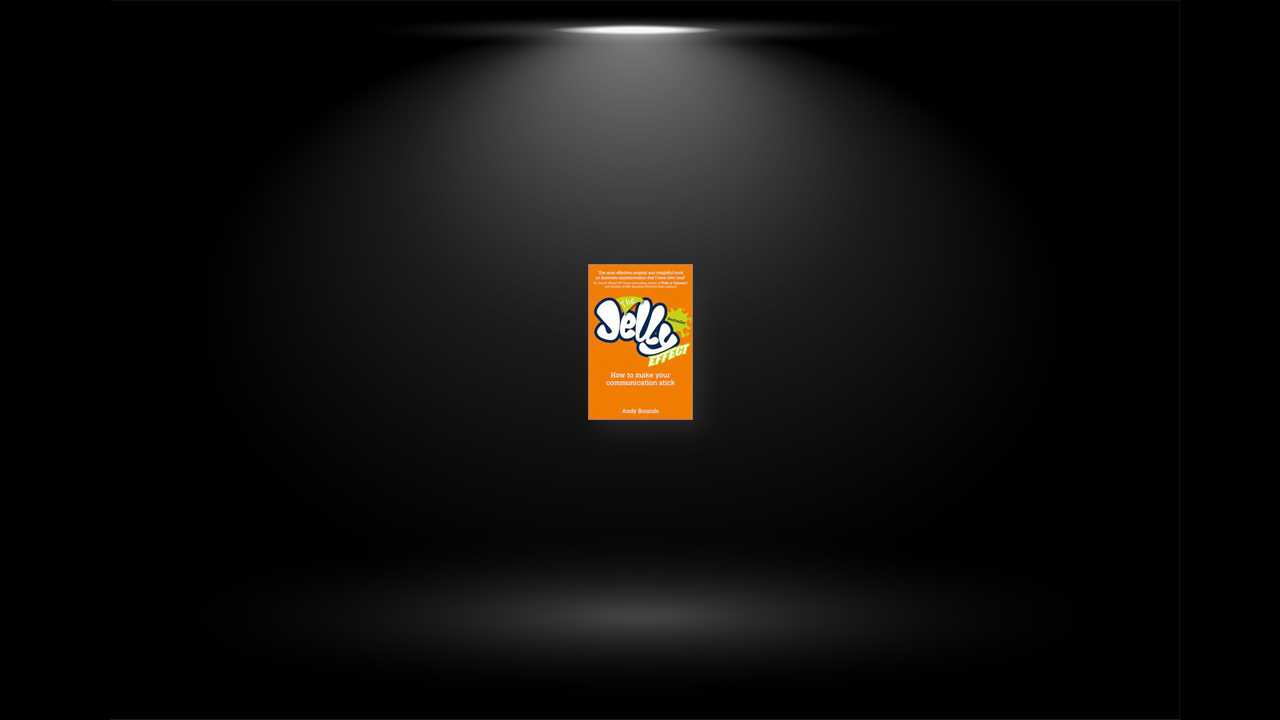Why ‘the Jelly Effect’?
Business people say too much irrelevant stuff • all the time • every day • to every type of person. Think about it. It’s true. Do any of these (totally irrelevant to you) things sound familiar? • presentations that begin with the presenting company’s year of formation, number of offices and staffing levels; • networking conversations that include a lengthy description of the other person’s company, their product range, infrastructure and history; or • sales pitches that give a full, excruciatingly detailed description of how the product works (much of which you just don’t need or even want to know).
Totally, utterly irrelevant to you. But you hear them all the time. And, hand on heart, you probably do it too. When you speak like this, it’s very much like filling a bucket with jelly, and flinging it at the other person, hoping some of it will stick.
Some will, sure. But most won’t. And it’s doubly inefficient. It wastes your effort, money, resources and that priceless commodity … time. And that of the people you talk to. But there’s an even bigger problem with ‘jellying’ someone. When you’re on the receiving end, when it’s you all this jelly is being flung at, you feel like you’re on the receiving end of a big wet, useless barrage. A needless barrage. You feel like a target, not a person.
It puts you off doing what they want … from buying into them and their ideas. And flipping it round, when it’s you ‘jellying’ someone else, they don’t always do what you want either. Or buy into you. Or your ideas. But imagine how much more you could achieve if you could overcome all this. Imagine if you knew how to say only the stuff that was 100% relevant to your audience.
Can you see how much more impact you would have? Saying the right things in the right way – with no jelly – would help you get better results than ever before.
THE FIVE RULES OF COMMUNICATION
these are the five rules you must follow to have the maximum impact – and minimum jelly – when speaking to others: 1. always context first; 2. frame of the other person; 3. thoroughness is key; 4. ‘extra info?’; and 5. required info only. The simple way to learn and recall the five rules is by remembering their initials spell the one word that drives jelly-free communication: AFTER.
AFTERS-BASED SELLING (SUPERB IDEA)
This title is a sentence you should remember. Customers don’t want the best technical lawyer in the world. They want the lawyer who can solve all their problems. So, to sell more, you have to be a fantastic problem solver.
And the first step of being a problem solver is to deliver fantastic AFTERs. You must leave legacies of success with every client you work with. And, then tell new clients the legacies they’ll be left with AFTER working with you.
ABC METHOD: HOW TO USE YOUR AFTERS TO SELL MORE
There are two things your customers want when making a buying decision: 1. their DESIRED AFTERs; and 2. absolute certainty that you can provide them. These are the only two things customers are interested in. If they know with 100% certainty that they will get the AFTERs they require, they will buy.
This turns traditional selling on its head, of course. Because standard sales stuff – like your date of incorporation – does not satisfy either of these criteria. It has nothing to do with their AFTERs. And it does nothing to transmit certainty that you can deliver them. The author devised a three-step approach to selling which ensures both AFTERs and certainty are covered. It’s really simple, but incredibly powerful.
The three steps to the ABC Approach are: AFTERs – establish their DESIRED AFTERs; Be certain – state with certainty you can provide those AFTERs; and Convince – prove that you can deliver those AFTERs. In other words, find out what they want, and then prove you can give it to them. This approach will help you get the sales that someone of your expertise could – and indeed should – get.
Another good thing about the ABC approach is that you don’t have much extra work to do. You will see that 90% of what you say in the ABC approach is made up of things you currently say when selling. So, although it’s a totally new framework, you have not got much new material to find. What you do need to do is restructure how you say it.
The ABC approach satisfies all five criteria. You will see it puts the sales meeting in context for the customer (rule 1), and that it’s totally geared to being in their frame (rule 2). Detail is only given where it’s needed (rule 3), you never give too much information (rule 4). And – crucially – the only words you say are relevant to the audience (rule 5). In other words, no jelly. Not one wasted word. And every single thing you say impresses the client.


